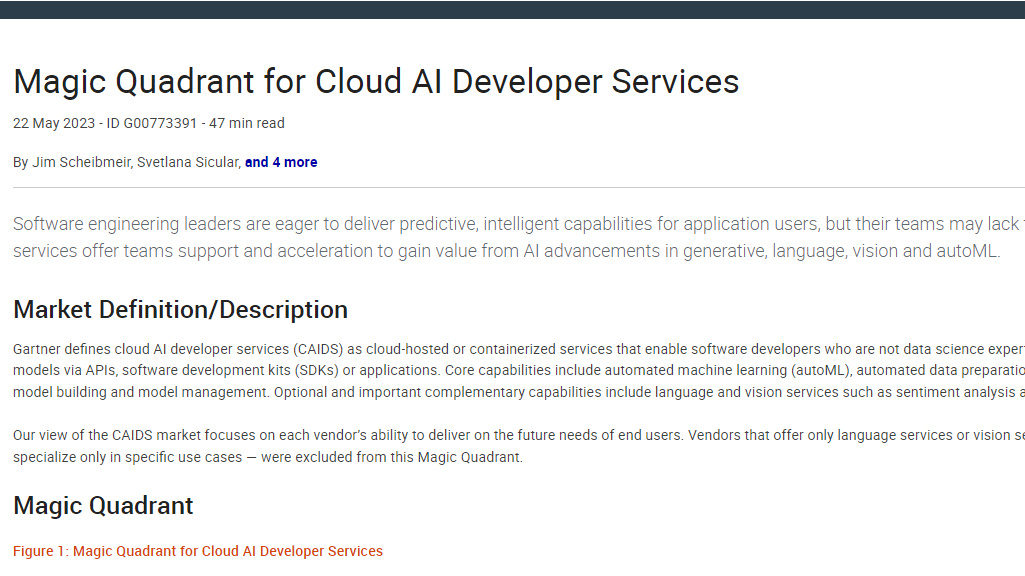Splunk adds AI and edge hardware to its observability product line-up
Generative AI brings natural language to SPL, and ML toolkit is updated


Splunk has launched new AI tools for its security and observability platform as well as its new Edge Hub for more streamlined edge data analytics.
The Splunk AI Assistant - now in preview - is designed to assist users with the authoring of Splunk Processing Language (SPL) queries.
Generative AI is leveraged via an AI chatbot to write or explain SPL, something the company says will improve time to value and make SPL more accessible.
Mark Woods, chief technical advisor EMEA at Splunk, told ITPro that training for the model behind the generative AI was based on the company’s own knowledgebase and that the limited release preview had been based on the company’s own internal experts.
RELATED RESOURCE

AI and cyber security
Understand why AI/ML is crucial to cyber security, and its best use cases
Woods’ words stand to reassure customers concerned that sensitive data might turn up in the AI.
He said: “We wouldn’t have any visibility of the actual query that you’re putting in place, nor of any of the data that you are taking”.
As well as the Generative AI tooling, Splunk also previewed ML-Assisted Thresholding to use historical data and patterns to create dynamic thresholds.
Get the ITPro daily newsletter
Sign up today and you will receive a free copy of our Future Focus 2025 report - the leading guidance on AI, cybersecurity and other IT challenges as per 700+ senior executives
Its IT Service Intelligence also features greater detection accuracy, with the Outlier Exclusion for Adaptive Thresholding aimed at detecting and omitting abnormal data points and outliers.
A preview of the OpenTelemetry Collector was also announced, aimed at providing a unified view of an enterprise’s infrastructure and services.
Splunk Edge Hub
The new Edge Hub device was also shown off and is aimed at simplifying the ingestion of data into Splunk’s analytics platform.
The compact device weighs in at just over 600g and designed to be mounted in a variety of customer environments. Splunk envisages customers simply plugging it in and using the device to stream environmental data back for analysis.
Onboard sensors comprise temperature, humidity, light, and sound. The device also features an accelerometer and gyroscope, and it can monitor air pressure and air quality. Typical applications of the latter sensor - according to its manufacturer, Bosch - include spotting unusual gases - indicating a possible leak - and spoiled food detection.
The device also features a screen with a dashboard showing the current sensor readings and can be connected via WiFi, Bluetooth, LTE, or Ethernet. Power is supplied by either USB-C or Power-Over-Ethernet.
The Cortex-based processor within the device - a Verdin IMX8M+ Quad with 8GB of RAM - has sufficient power for collection and collation of data from the sensor suite.
Woods said to ITPro that he expected the device would open customers’ eyes to the data in their OT and IoT environments: “They suddenly start to see the data that they already have all around them”.
“All those functional domain-specific environments, they become really tangible and valuable to customers.”
Who is Splunk’s Edge Hub for?
Woods identified three main user groups for the device. Compared to fitting out an environment with sensors, Splunk feels the Edge Hub represents a relatively low barrier to entry, so the first user group targeted is the one that has yet to use sensors and the data does not exist.
The second group, according to Woods, might have some sensors installed, but the systems are closed and Splunk’s device represents a useful bridge.
Finally, there is the group that is already equipped with sensors in their environment - (Woods cited Mars as an example - and the Edge Hub provides additional resilience or a way to experiment without adding a toll to an operation system.
Splunk said that data from the device could be used as part of its predictive analytics platform to spot anomalies in manufacturing processes as well as detect, investigate and remediate physical threats from a single platform.
The Splunk Edge Hub is US-only for now - although the company plans to roll it out in EMEA and APAC. It is also only available through the company’s partners.

Richard Speed is an expert in databases, DevOps and IT regulations and governance. He was previously a Staff Writer for ITPro, CloudPro and ChannelPro, before going freelance. He first joined Future in 2023 having worked as a reporter for The Register. He has also attended numerous domestic and international events, including Microsoft's Build and Ignite conferences and both US and EU KubeCons.
Prior to joining The Register, he spent a number of years working in IT in the pharmaceutical and financial sectors.
-
 Bigger salaries, more burnout: Is the CISO role in crisis?
Bigger salaries, more burnout: Is the CISO role in crisis?In-depth CISOs are more stressed than ever before – but why is this and what can be done?
By Kate O'Flaherty Published
-
 Cheap cyber crime kits can be bought on the dark web for less than $25
Cheap cyber crime kits can be bought on the dark web for less than $25News Research from NordVPN shows phishing kits are now widely available on the dark web and via messaging apps like Telegram, and are often selling for less than $25.
By Emma Woollacott Published
-
 EU tech firms team up to launch 'Virt8ra' sovereign edge cloud platform
EU tech firms team up to launch 'Virt8ra' sovereign edge cloud platformNews Virt8ra is aimed at reducing European dependence on hyperscalers and big tech vendors, and is already operational in six countries
By Emma Woollacott Published
-
 Enterprises are ramping up IT observability investment – here's why
Enterprises are ramping up IT observability investment – here's whyNews Increased developer speed and productivity are key factors in the IT observability drive
By Nicole Kobie Published
-
 Securing Europe: Cloudflare's cyber security solutions for Public Sector resilience
Securing Europe: Cloudflare's cyber security solutions for Public Sector resilienceWebinar Enhance your privacy and security with a DDoS mitigation system
By ITPro Published
-
 Three innovative technologies to address UPS challenges at the edge
Three innovative technologies to address UPS challenges at the edgeWhitepaper With increasing focus on edge computing comes added pressure for better uninterruptible power supply (UPS)
By ITPro Last updated
-
 Mastering hybrid cloud
Mastering hybrid cloudWhitepaper Hybrid cloud drives your business' most transformational software and data-driven roadmaps for improved service delivery
By ITPro Last updated
-
 Mine the gaps
Mine the gapsWhitepaper Extracting more value by integrating Salesforce Clouds across the enterprise
By ITPro Published
-
 Four cyber security use cases for AI
Four cyber security use cases for AIwebinar An executive crash course into cyber security for AI by Cloudflare and Optiv
By ITPro Published
-
 Magic Quadrant for Cloud AI Developer Services
Magic Quadrant for Cloud AI Developer ServicesWhitepaper An analysis of the Cloud AI Developer Services (CAIDS) market and how vendors are meeting the needs of end-users
By ITPro Published